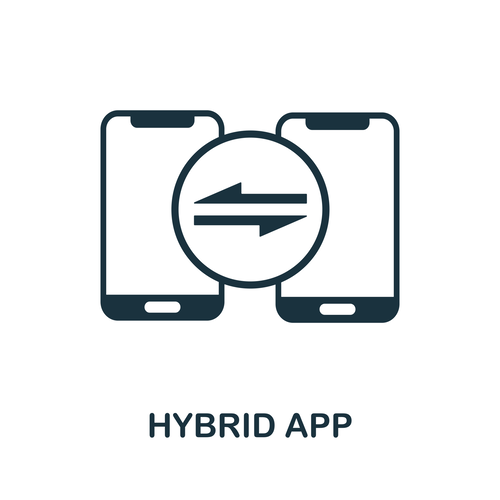The mobile browser would, therefore, set the viewport width to 980 pixels, render the page at that width, and show the result as a zoomed-out version of the desktop layout. Users could zoom in and pan around the website to view the bits they were interested in, but it looked bad. Responsive typography describes changing font sizes within media queries or using viewport units to reflect lesser or greater amounts of screen real estate. Whether using separate desktop and mobile websites or a single responsive website, the Web pages are coded and maintained by people with the same Web programming expertise. When a website and separate mobile apps are maintained, developers must be experienced in Web, Apple and Android programming.

This is accomplished with the use of flexible grids and layouts, responsive images, and CSS media queries. Responsive design means that your website will adapt to suit whichever device it is being viewed on. This can include adjusting the layout and content of your site to fit different screen sizes, as well as optimising your site’s performance for mobile devices.
Examples of responsive web design
To know the responsiveness of your website, simply open the website on a browser and zoom in and zoom out to see the changes in the website elements. If the elements adapt to the size of the screen, the website is responsive. Responsive web designs are necessary because now google gives priority to mobile-friendly designs. WebFX’s proprietary digital marketing platform makes it easier than ever to track digital marketing performance, conduct industry research, calculate ROI, and make strategic decisions.

With the rise of mobile phones and tablets, this has all changed, and people are accessing the internet on a broader range of devices, from small handhelds to specialised wide-screen monitors. So, where there used to be a standard viewing experience for all users, there are now multiple that span a range of screen sizes and device types. The standard way is to use images, CSS media queries, and flexible grids and layouts smartly. Users’ experience on the website shouldn’t change when they switch from one device to another because of differences in screen resolution, image size, or scripting abilities.
Keep learning about RWD with Coursera
Such options allow specifying the font size for the heading once; you don’t need to work separately with different screen sizes and change media queries. Complex data or interactions can be hard to fit into modular what does responsive web design mean pieces that are easy to shuffle around a page, while preserving clarity and functionality. A fluid grid layout can create different formats corresponding to the devices on which the website is displayed.

Grid systems are aids designers use to build, design, arrange information and make consistent user experiences. In interaction design, multi-column, hierarchical and modular are the most widely-used types of grids. They use the standard hamburger menu on smaller screens and the product rows resize from four-column rows into two-column rows. The calls-to-action remain visible and easily clickable even as the screen size goes down and the product images scale nicely as well. With tons of resources and services online, it might be overwhelming on where to start building your responsive website. At AB Web, we provide a free quote to get you started and answer all your questions.
FAQs About Responsive Design
To make responsive pictures, specialists choose modern image tag attributes, which help the image to respond quickly to multiple devices and screen resolutions. A fluid grid divided into columns, the developer can scale width and height; it’s not necessary to set fixed dimensions. RWD delivers the same code to all devices, regardless if the piece of code applies to that design or not. Changes to the design occur on the client-side, meaning each device — the phone, tablet or computer — receives the full code for all devices and takes what it needs. Responsive design aims to ensure a website delivers a good experience regardless of what device someone uses.
We have responsive web design experts who can put together a responsive website for you, then train you to maintain and update the site yourself. The HTML element allows you to define different images for different browser window sizes. When the CSS width property is set to a percentage value, an image will scale up and down when resizing the browser window.
Why responsive web design is important
Other design variants for multiple devices require a redirect to the suitable version of a web page. Due to the lack of redirection, a person quickly gets access to exciting content. Responsive web design makes web designers’ lives more accessible because they don’t have to work day and night creating an interface for every device. It is also beneficial for business owners, administrators, and marketers.
For example, a website shouldn’t block an iPad user’s access if the user has installed a VPN for iOS. This means the site should have smart features that change automatically based on how the user uses it. Each time a new piece of technology came out, starting from scratch wouldn’t be necessary. The mobile-friendliness of responsive web design also creates a better user experience for the many people who do their internet browsing, shopping, and banking on their phones. According to data from Zippia released in 2023, 82% of shoppers in the US are using their smartphones to make purchases, particularly for entertainment and food .
Popular related searches
That’s why you should never customize the text using only viewport units. This approach demonstrates that media queries help change the web page’s layout. They allow customizing different elements to make them more attractive and comfortable to work with various sizes of displays. Another essential element of a responsive website is responsive typography.
- The majority of responsive websites use a 12-column grid system, but you can use whatever grid system you prefer as long as it is responsive.
- Responsive design is robust and economical, but its “easy” nature is deceptive.
- Still, nowadays, it also allows hiding some details for small screen sizes.
- If you’re comfortable working with CSS, responsive web design is something you can definitely do yourself.
- It’s also vital that any padding or margin settings look good on all devices to ensure a consistent experience.
These file formats are lightweight, and you can scale them to any resolution without quality loss. Get to know everything about grids, why they are important and how to use them in interface design. For non-photographic images, such as icons, you can use SVG files—these file formats are lightweight, and you can scale them to any resolution without losing quality.
Tutorials and References
Studies show that after a bad mobile experience, one in two people went to a competitor’s site. A responsive website will not only look great no matter what device it’s viewed on, but it will also be user-friendly and provide an optimal experience for all users. If you’re looking for some professional assistance when it comes to making your website responsive, WebFX can help. https://www.globalcloudteam.com/ We offer responsive web design and development services, with over 1,128 sites launched. You can also use a free tool, like Google’s Mobile-Friendly Test, to see if pages on your website are mobile-friendly. While you can achieve mobile-friendliness with other design approaches, such as adaptive design, responsive web design is the most common because of its advantages.
